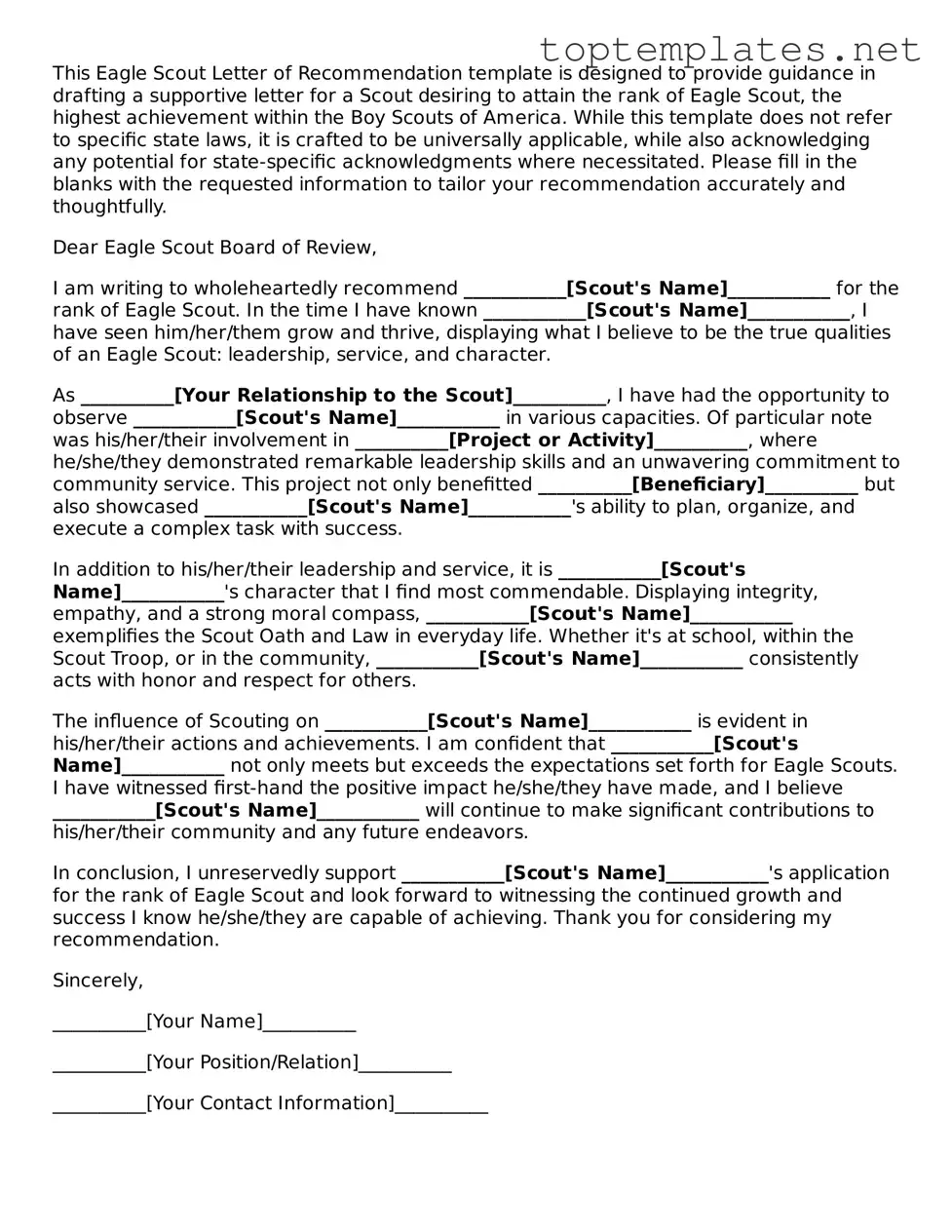What is an Eagle Scout Letter of Recommendation?
An Eagle Scout Letter of Recommendation is a document requested from individuals who are familiar with a Boy Scout and can vouch for his character, achievements, and readiness to become an Eagle Scout, which is the highest rank attainable in the Scouts BSA program of the Boy Scouts of America (BSA).
Who should write an Eagle Scout Letter of Recommendation?
This letter should ideally be written by adults who have had significant interactions with the candidate and can provide meaningful insights into his character, leadership, and service. Often, these include teachers, coaches, community or religious leaders, and family friends. It's important for Scouts to choose recommenders who truly know them and can speak to their growth and achievements.
How is the Eagle Scout Letter of Recommendation submitted?
The process for submitting the Eagle Scout Letter of Recommendation varies by local BSA council. Generally, the Scout provides the recommender with the form and an envelope with instructions. Recommenders are then usually asked to send the completed letter directly to the Scout's troop leadership or local council office, ensuring confidentiality and unbiased evaluations. The Scout should verify the submission process with their troop leaders or local council.
Can family members write an Eagle Scout Letter of Recommendation?
Typically, family members are not preferred as recommenders for the Eagle Scout Letter of Recommendation because the aim is to provide an unbiased view of the Scout's character and achievements from those outside the immediate family. However, in situations where a family member has played a significant role in the Scout's development in capacities such as a coach or teacher, exceptions might be made at the discretion of the troop leadership or local council.
What should be included in an Eagle Scout Letter of Recommendation?
The letter should provide specific examples of the Scout's leadership, character, service, and achievements, reflecting why the individual believes the Scout deserves the rank of Eagle. It's also helpful to include details about how long and in what capacity the recommender has known the Scout. An effective letter will offer a personalized account of the Scout's growth and potential to positively impact his community.
Is there a deadline for submitting the Eagle Scout Letter of Recommendation?
Yes, there is a deadline, but it can vary by the Scout's troop and local council. The deadline is typically tied to the Scout's Eagle Scout Rank Application and Eagle Scout Service Project deadlines. Scouts must inquire about specific deadlines with their troop leadership or council to ensure all letters are submitted on time.
What happens if a recommendation letter is not positive?
In the event of a non-positive recommendation, troop leaders and Scout officials review the contents to determine its impact on the Scout's application for Eagle Scout rank. The emphasis is on understanding the context and specifics provided in the letter, as it's important for the review process to be fair and comprehensive. Scouts have the opportunity to address concerns raised in such letters, often through discussions with their Scoutmaster or an Eagle Scout board of review.
Can a Scout submit more letters of recommendation than required?
While it's possible to submit more letters than required, it's best to follow the guidelines provided by the troop or council regarding the number of letters requested. The focus should be on the quality of recommendations rather than quantity, ensuring that each letter provides unique insights into the Scout's character and leadership abilities.
